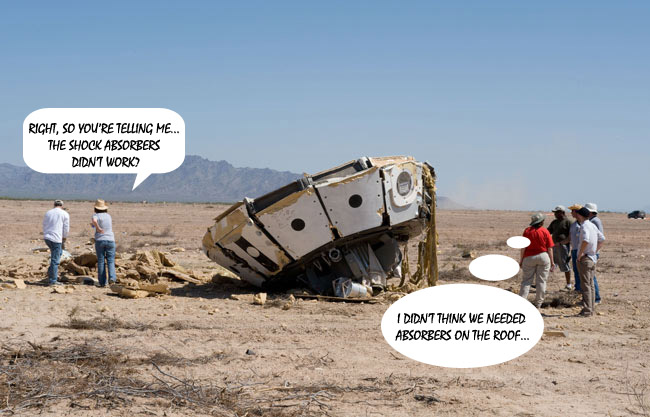
The 327 ft tall Ares I-X is currently waiting inside Kennedy Space Center’s Vehicle Assembly Building for its delayed 4.2 mile rollout to the launchpad. Originally scheduled for Monday, the rollout was postponed by 24 hours when engineers spotted a nitrogen gas leak on Oct. 14th. It would appear the problem has been rectified and we can look forward to seeing the tallest rocket on the planet roll out to Pad 39B by Tuesday morning.
Unfortunately, the Ares I-X test flight is generating little excitement, even though NASA is heralding the scheduled Oct. 27th launch as “the First Flight of a New Era.” When there’s talk that the Constellation Program might be scrapped all together to allow for a cheaper alternative, there’s little wonder that even the most excited space flight enthusiasts are looking at the slender white frame of the Ares I-X thinking, will this be the only launch of the Constellation Program?
This negativity isn’t unfounded either. As we await the final report from the Augustine Commission (to be delivered to the White House later this week), one of the conclusions could be that Constellation is more hassle for NASA to complete rather than to scrap.
In this case Ares I-X will have become a very expensive firework.
Although it is unlikely the White House will decide on a course of action before Oct. 27th, I can’t help but think the outcome of Constellation would have been decided before the Ares I-X has even blasted off. No matter how well the four-stage test rocket performs during its 28 mile-high suborbital flight, the project could still be shelved.
But what if there are several options for NASA as the Commission Report summary suggests? Could the Ares I-X launch be the decision maker?
The Oct. 27th launch will be an amazing event in itself (and I’m dead excited to see that monster thunder into the skies), and unless an overlooked technical problem rears its ugly head, we’ll see the test launch of a brand new rocket system. What’s not awesome about that? If the Ares I-X blasts off perfectly, and the Ares design is proven to be free from vibrations and other design flaws, could a proof of concept sway the decision in favour of keeping Constellation in development? Possibly.
Regardless of the conclusions to come out of the Augustine Commission, the launch of Ares I-X will mark a crossroads for manned spaceflight. History will be written, but will history favour the Constellation Program? I don’t think I could place a bet either way.
Source: Orlando Sentinel








